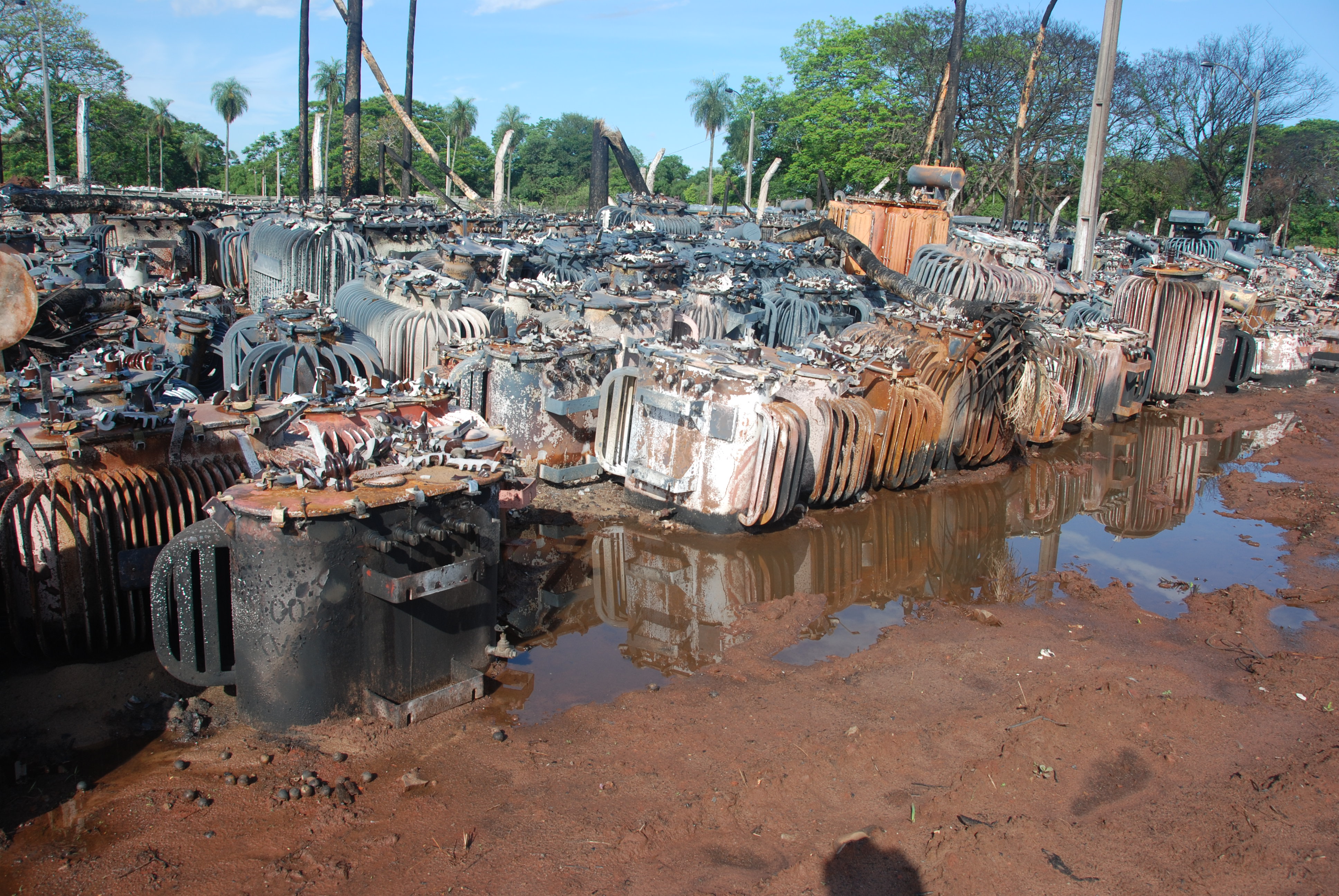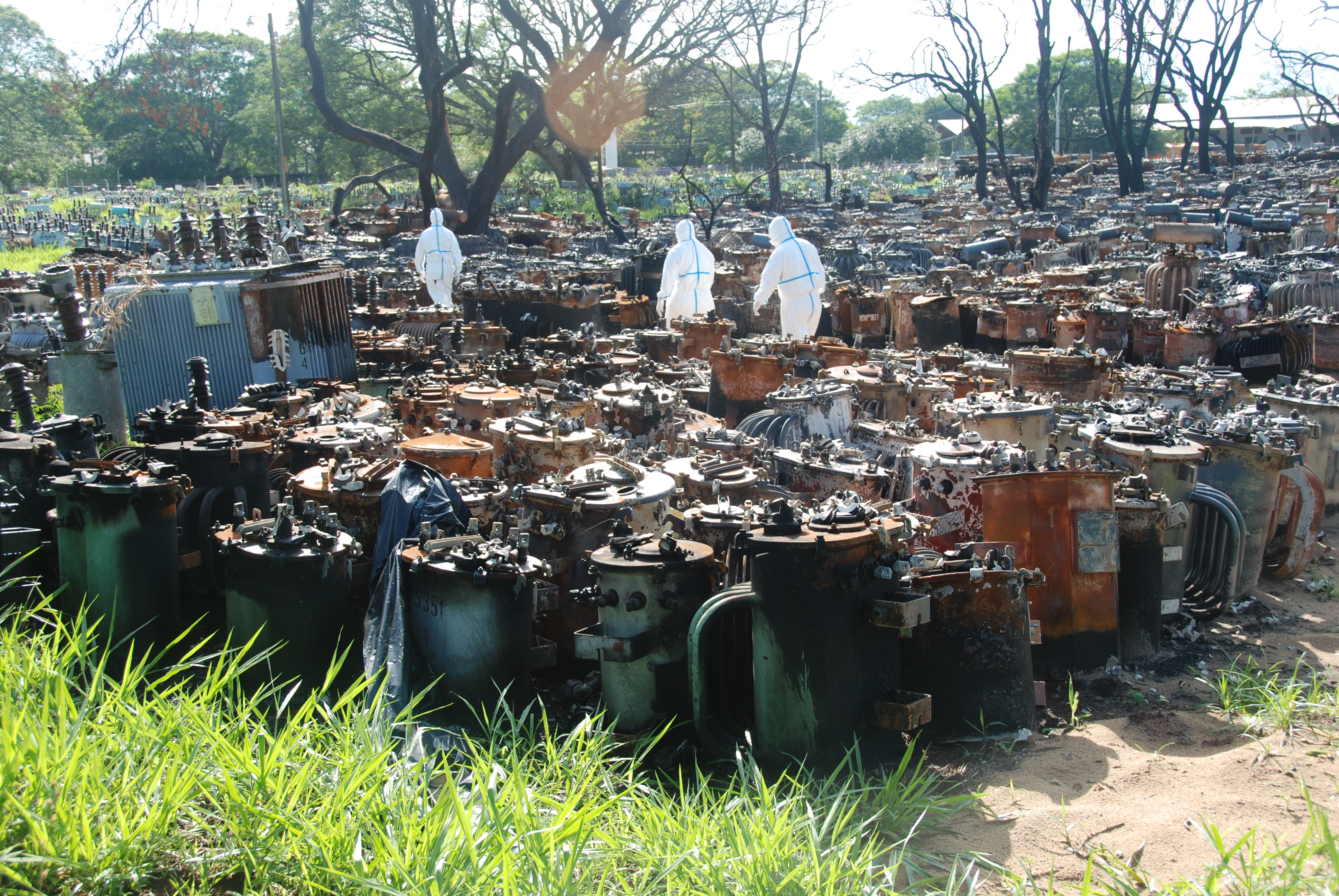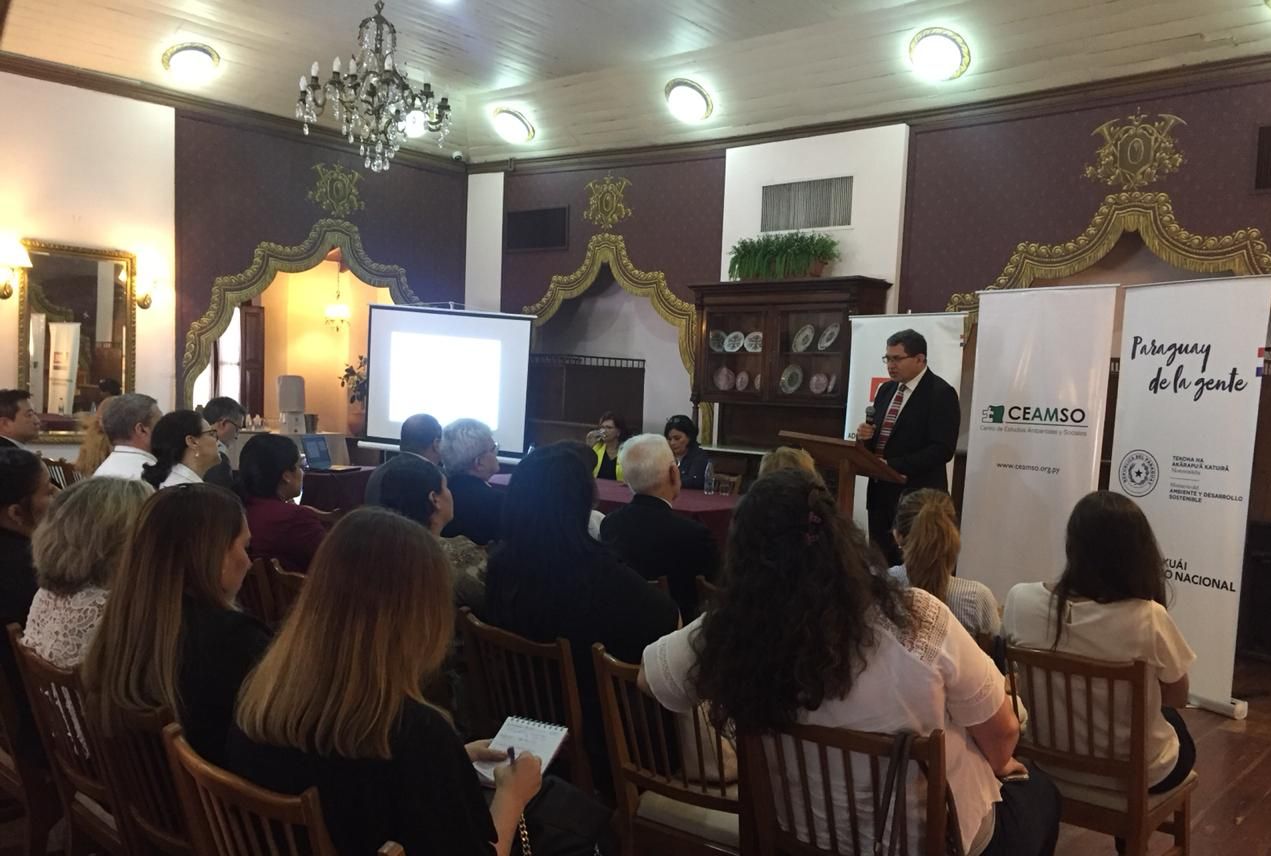

Eliminating toxic chemicals in Paraguay
26 June 2019 Charles ARTHUR

On 14 October 2015, a fire tore through a transformer depot of Paraguay’s National Electricity Administration (ANDE), located in Laurelty, San Lorenzo, 11km east of the capital city, Asunción. The blaze affected the stored transformers, capacitors and other equipment containing PCBs (polychlorinated biphenyls), a chemical compound banned in the 1970s in many countries owing to environmental and health concerns. Clouds of smoke drifted over the area, creating a serious health risk for the more than a quarter of a million people living in the densely populated neighbourhoods of San Lorenzo.


PCBs are a group of persistent organic pollutants (POPs) that once released into the environment can travel long distances, contaminating soil and water and accumulating in the fatty tissues of people and animals. From increasing the risk of cancer in humans to being toxic to animals, the effects of PCBs are wide-ranging and, so far, only 17% of PCBs have been eliminated at the global level. The Stockholm Convention on POPs calls for the total elimination of all PCBs by 2028.
Up until the late 1970s, PCBs were widely used as insulators in electrical equipment, such as transformers and capacitators, as well as being used as coolants and fire retardants.
In the wake of the San Lorenzo fire, a UN-led mission was carried out at the request of Paraguay’s Ministry of the Environment. However, information gaps made it difficult for a team of experts from the United Nations Environment Programme (UNEP) and the Secretariat of the Basel, Rotterdam and Stockholm (BRS) Conventions to accurately evaluate the full extent of the environmental and human health risks of the incident.
In December 2018, the United Nations Industrial Development Organization (UNIDO) launched a new project funded by the Global Environment Facility (GEF) and co-financed by the government and various Paraguayan organizations. The project will run for five years, and aims to eliminate at least 700 metric tons of PCBs and PCB-contaminated waste over this period.
At the official project launch, Ariel Oviedo, the Minister of Environment and Sustainable Development, affirmed, “It is time that Paraguay takes this issue seriously… We have the technology, knowledge, capacity and resources. There are no excuses now for not considering harmony between the environment and sustainable development.”

The project will work directly with ANDE, and will include an assessment of PCB/ unintentional POPs (u-POPs) pollution due to the fire, as well as various hazardous materials and risk management training courses.
Sub-committees have already been formed to develop a legal framework on PCBs and to drive the establishment of a National PCB Management Centre to support PCBs owners to properly manage and dispose of PCBs and related wastes. At the same time, planning is well underway for the inventory of at least 10,000 PCB-containing equipment units and PCB wastes and a national PCB disposal system.
According to Ovidio Espinola, National Project Director and Focal Point for the Stockholm Convention, the Project’s Technical Support Committee has already engaged various sectors from industry to academia.
“We are also coordinating capacity building activities to strengthen analysis in a number of laboratories,” added Patricia Sacco, National Project Coordinator.
“Overall, the project aims to improve national PCB policy, and build capacity in this area, while raising awareness of the issue at the same time,” explains UNIDO project manager, Alfredo Cueva. “This will help to protect human health and the environment in Paraguay and hopefully we can help the country take steps to ensure that the risks of such a disaster happening again are significantly minimized.”
Further Reading: